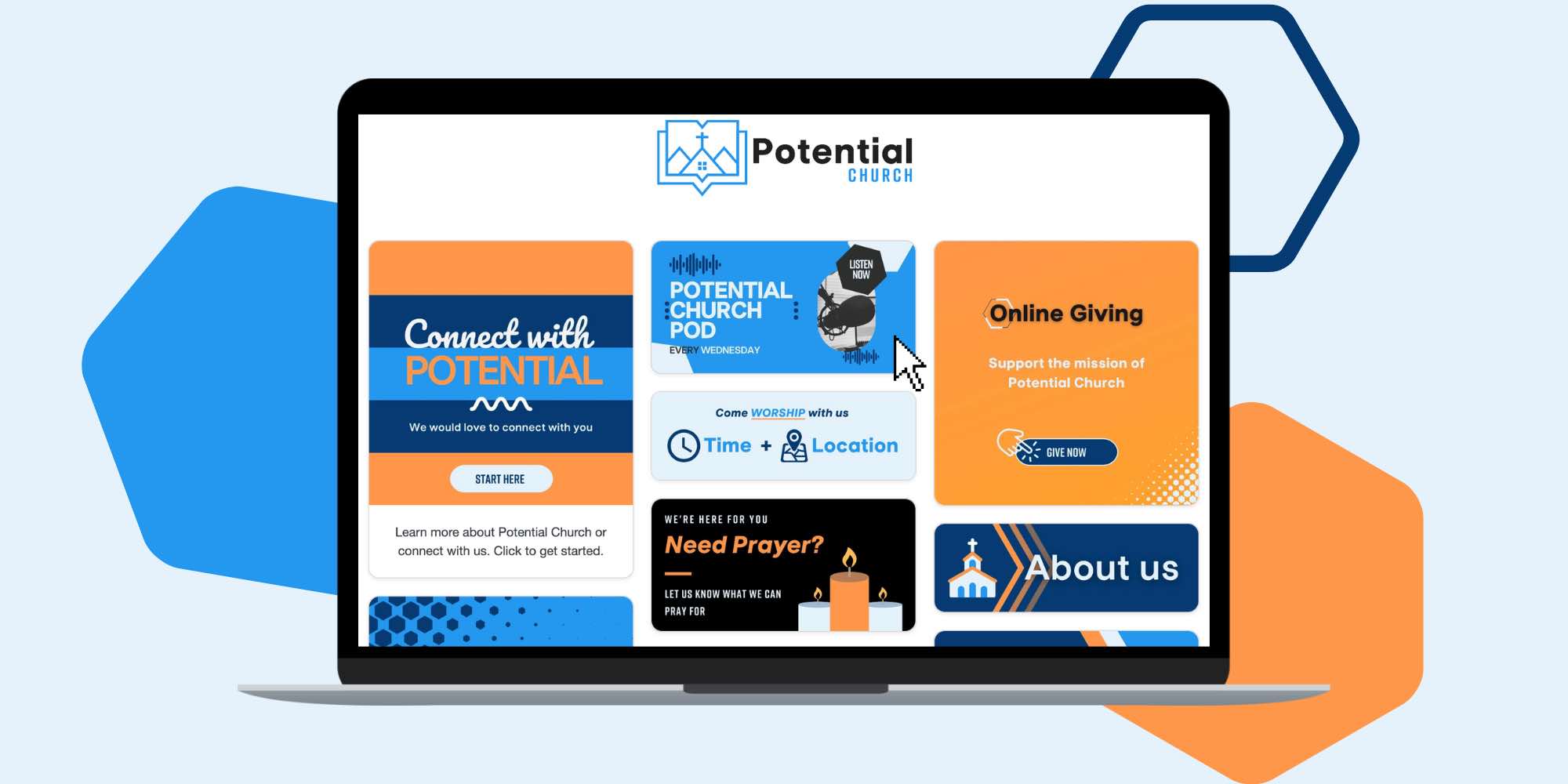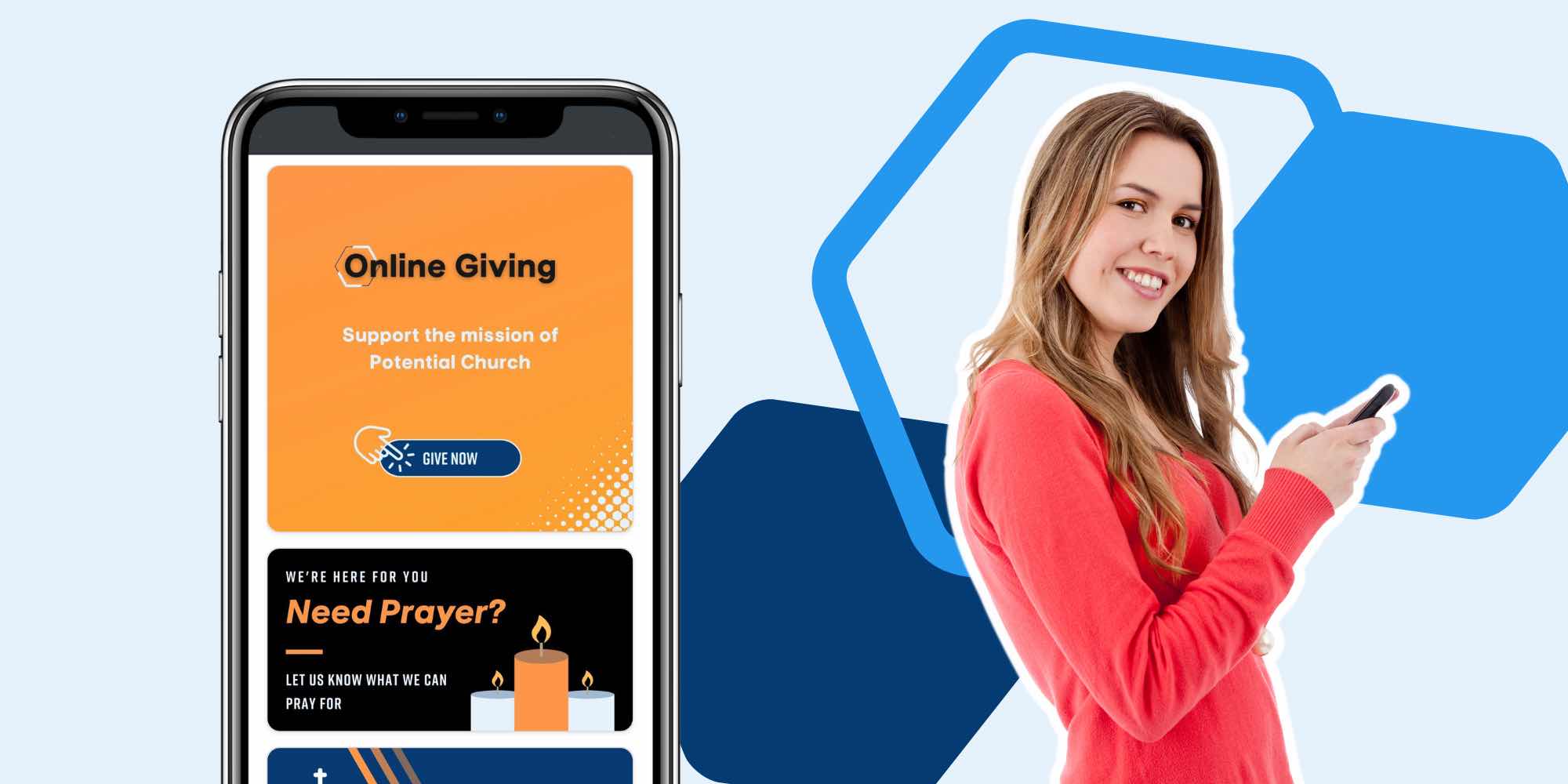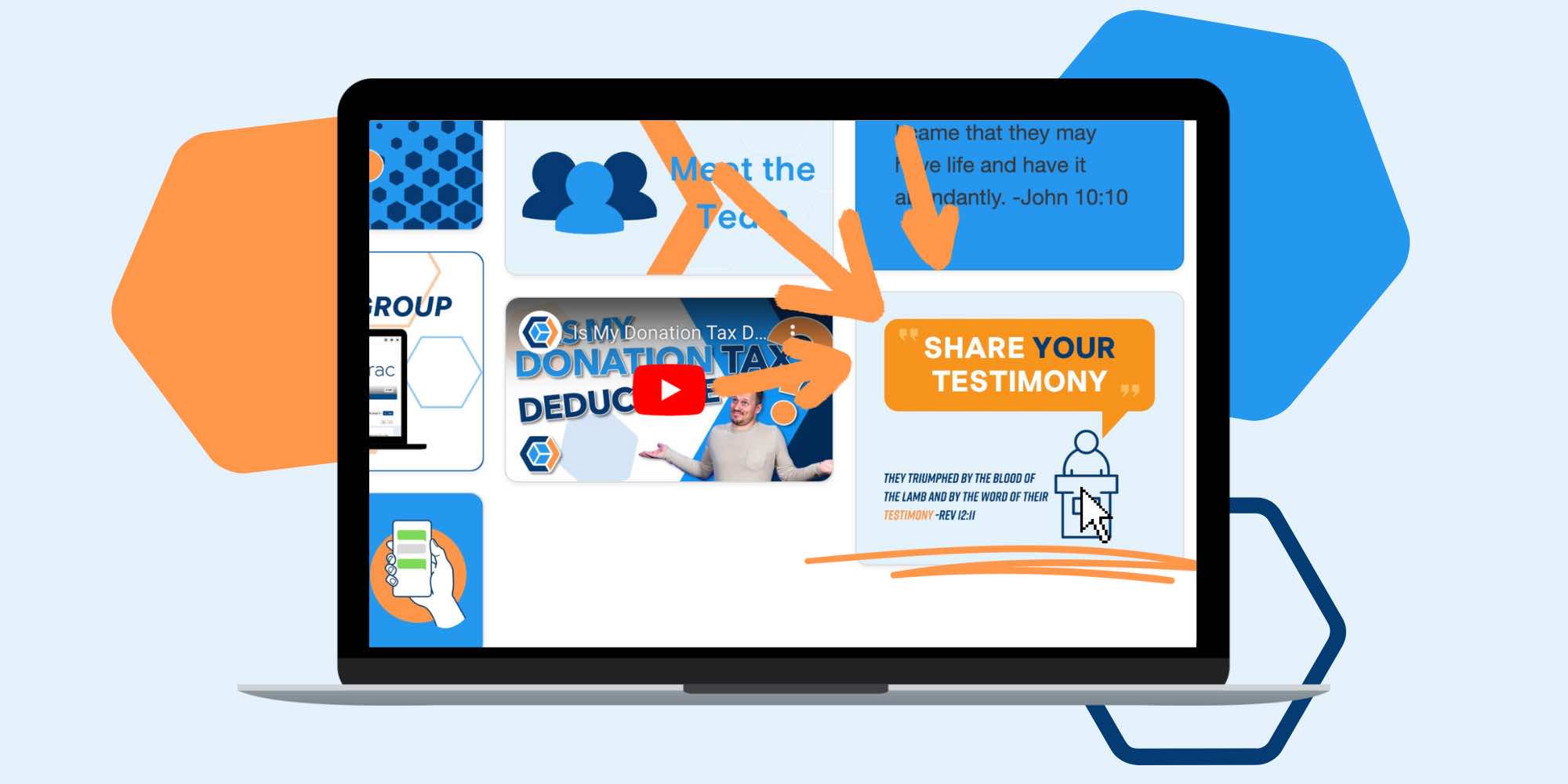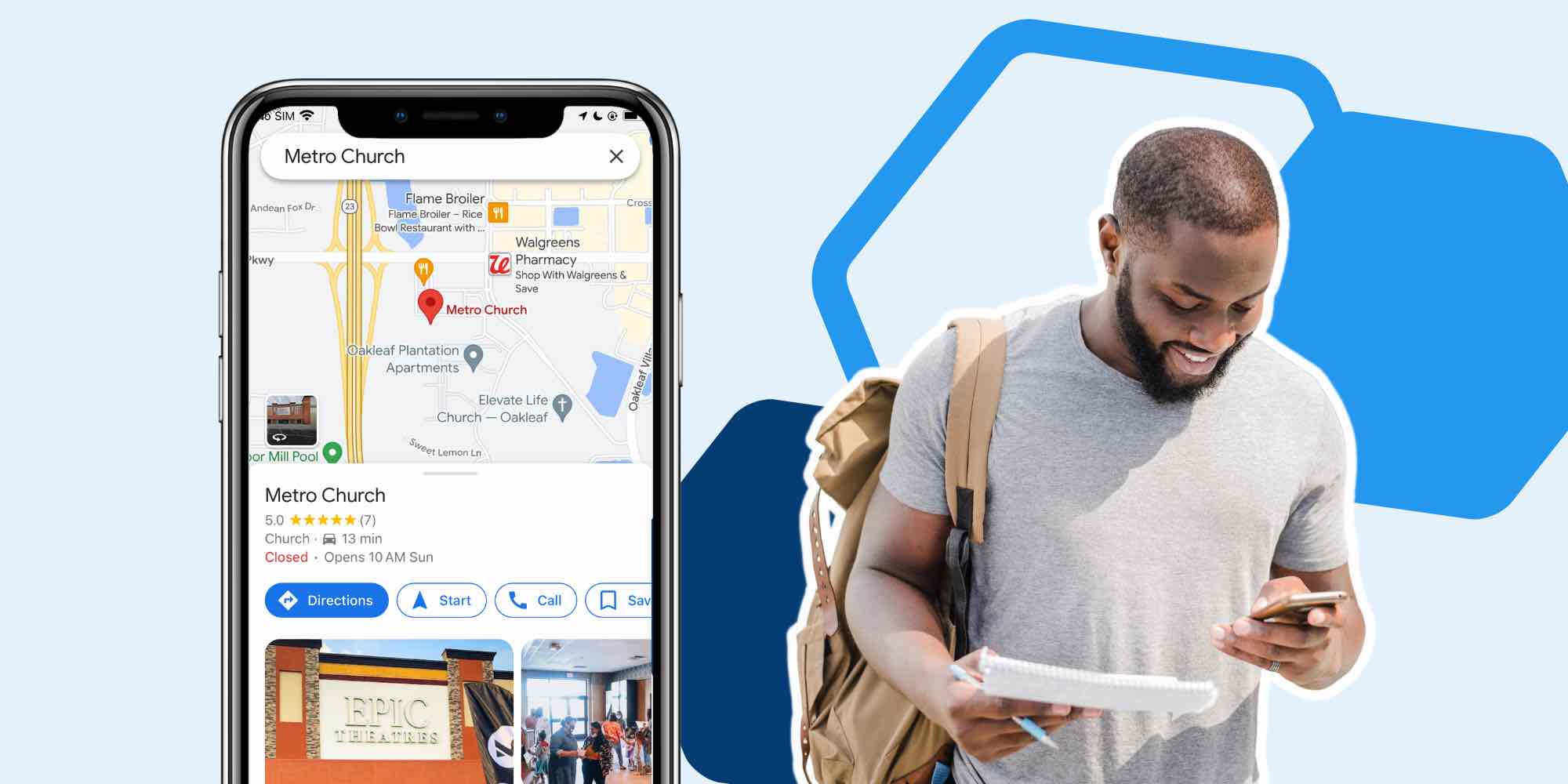The Best Church Website You Can Design In An Afternoon

I talk to church leaders like you every day. When asked, almost all of them admit they're not techy, they don't know how to make a church website, and know nothing about graphic design.
Here's the good news - It's easier to build a great-looking and effective website for your church than ever before.
There are lots of free church website builders and free design tools that can enable you to easily build the best church website in as little as an afternoon. But before you start clicking away with that drag-and-drop builder, there are a few questions you need to answer and ideas you need to consider in your creation process. As a bonus, I've included 2 amazing (and free) tools.
Question: Who Is Your Church Website For?
Before we go any further, we have to ask the most important question: Who is your website for?
"Everyone!" 👈 That's the answer I usually hear.
Let's ask ourselves another more clarifying question: Who is the most likely to visit your site?
These people fall into two categories:
- Potential visitors
- Members looking for something specific
Because we know who is checking out your website, we can create our website with this audience in mind. Now it's time to decide what your website needs to do for your audience.
Question: What Do You Want Your Website To Do For Your Ministry?
I ask pastors this question a lot and hear a lot of similar answers:
"Sharing the Gospel!"
"Letting people know what's happening at our church!"
These are great goals! Here's the problem:
Your website is the least effective way to do any of that!
The majority of people visiting your website fall into two groups. They're either potential visitors checking your ministry out, or members looking for a form or link you told them about. That's it!
So if your site isn't effective in spreading the Gospel or sharing upcoming events, what is it good for?
- Create a first impression of your church
- Cultivate engagement and commitment
Anything on your site that doesn't serve these two objectives is superfluous and creates "noise". Everything you add to your church website needs to accomplish at least one of those two things. Surprisingly, I see many church website templates fail to do these two things well.
Let's talk about how to make your website the best fit for both prospects and members.
1. Easy to Navigate for First-Time Visitors
Your ministry's website is the first thing most people see of your ministry. More than likely, the reason they visited on Sunday is that they found your website and liked what they saw.

With that in mind, make it as easy as possible for first-time visitors to find what they're looking for and compel them to join. That includes your mission and vision statement, statement of belief, as well as service times and location.
These things should be right on your landing page, along with high-quality pictures of real people and the smiling faces a guest will see when they walk through the door.
Also add links to an About Us page, staff info page, and information about children's ministry to the landing page. This makes it easy for new people to find exactly what they're looking for.
After you master content and ease of navigation, next is the overall design.
2. Simple, Mobile-Friendly Church Website Design Is Best
Here are two quick facts you need to know ⏬
What does this mean for your website? It means it needs to be mobile-firstand itneeds to be simple.
Don't focus on making your site stand out from all the others. You just have to make it compelling to prospects in your area and useful to your members.

Choose a church website template that looks and works best on a mobile phone. Remember: the majority of all potential visitors are checking your website before coming. And the majority of those people are checking your site from their phones.
3. Calls to Action Beyond The Donation Button
Most churches have an action button for online giving. Unfortunately, many stop there. Could you imagine having a worship service where the only call to action you gave your people was to give? Of course not!
In the same way we extend multiple ways of worship (AKA calls to action) in church services, the same is needed on the website. For a congregation to grow and thrive, the church website must provide go beyond a place of online offerings or a list of upcoming church events.
In the past, the most important metric church leaders used to measure growth was attendance. That's changing. As Carey Nieuwhof has said, "Engagement is the new church attendance" ›

Your church website is the perfect place to cultivate engagement. By promoting all of your "next steps" on your site, you can help your members see what's next for them on their faith journey and create greater forward momentum.
- Do you want guests to attend class to become members? Let them know on your site when the class will be held.
- Do you want non-believers to accept Christ and get baptized? Add a video of others getting baptized and a contact form for them to fill out.
- Do you want people to pledge to donate for a year? Create content around all the ministry your church plans to do with their donation!
There are several ways your people can grow their faith and increase their level of commitment. For every one of those opportunities, promote it on your site and direct people there when they're ready to take that next step.
Two Amazing Church Website Design Tools
Creating custom church websites has never been easier than it is today!
There areso many free tools you can use to make your church website look like it was made by a pro! Not to mention, these tools will also make all of your other media look great.
1. Canva for Church Media
Canva is your new secret weapon. They give you thousands of free templates › that are easy to edit. These can be used for anything from websites for churches, sermon slides, to even a new church logo. They have hundreds of video backgrounds too that you can use and edit within their online app.
2. Coolors for Colors
Coolors is my favorite. Create attractive color palettes › for everything. You can even use this to refresh your ministry's branding! And Fontjoy › will help you develop fonts that fit your organization's personality.
Watch our video below to learn more about each of these tools and see how easy they are to use for your church's website, sermons, printed material, and more!
*Canva offers their Pro subscription for FREE to non-profits! Apply here ›
What About Search Engine Optimization?
I know some of you are asking this question. Having good SEO (Search Engine Optimization) keywords on your site is important, but it's no longer the most important thing that pulls people to your website.
Online visitors are more likely to use another tool to find churches near them: Google Maps. According to Baylor University, 68% of churchgoers had a commute of 15 minutes or less › to their church community. To find one close to home, many will go to Google Maps and search something like "Methodist Church near me."

Once they find one they're interested in, the next thing they do is check out their website!
The best way to boost visibility on something like Google Maps is to establish a Google My Business page, which can be done for free and in just a few minutes! This will make people searching on Maps more likely to find your church.
Putting your church on Google Maps › is the best way to drive traffic to both your website and your church!
Become Your Own Church Web Design Team
Making your church website the best it can be has never been easier.
Asking yourself who the site is for and what you want it to do for your ministry, along with leveraging these free online platforms will transform the process of creating a website that serves the needs of your organization.
Keep building the church!

|
Matt
|